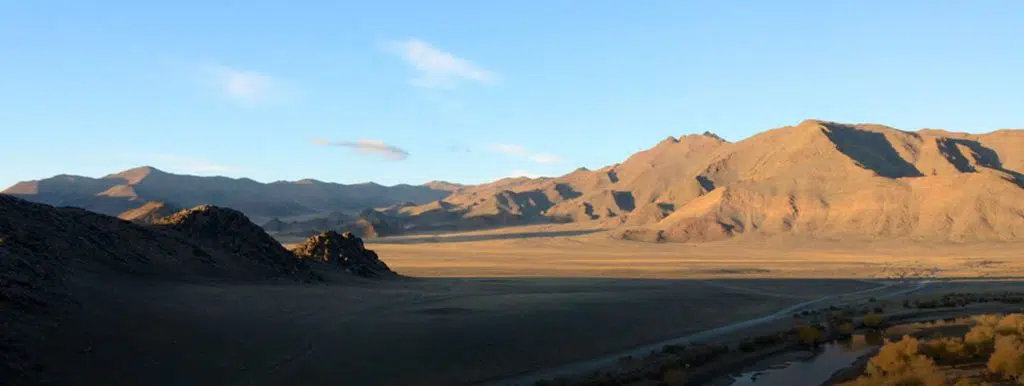No one can say for sure when the art form of throat singing began. The historical records mention it as early as the Han Dynasty, between 206 – 220 BC. Throat singing then appears in Chinese texts dating in 92 AD. From these accounts, we learn that the northern barbarians who worshipped the wolves sang with a scary roaring sound when they attacked, which scared their enemies. Following a battle, these same men would sit around the fire and whistle from their throats.
These ancient barbarians were none other than the nomadic Mongolians, and throat singing is said to have originated with the Uriankhai ethnic group of the Gobi Altai and Khovd regions.
Today, throat singing can be heard all over the world, yet Mongolia has perfected the true form as it is performed at its highest level. It is a wonder to behold masters of the form.
Locally known as Hoomii—which translates to “base of the palate” in Mongolian—throat singing can produce multiple sounds at the same time, yet is performed without any musical instrument. Performed solo or in an ensemble, the range of possible sounds is created using only the lips, palate, nose, throat, chest, and belly.

You can divide the styles of Hoomii into four different types:
Kharkhiraa: producing a sound coming from the belly of the performer.
Narmai Hoomii: sound generated from the nose.
Shakhai: sound generated from the depths of one’s throat.
Isgeree: a whistle generated from the mouth.
Isgeree can be further divided into three different styles—using the teeth, lips, and palate. The person who can perform all three is considered a master throat singer.
The legendary origin of Hoomii says that, in the ancient times, an orphaned boy was lost within the high mountains among many high cliffs. When the wind blew, the rocks created certain sounds. For three years the boy learned to interact with the nature around him by speaking the natural sounds, and in return the nature helped the boy to survive. And when the boy left the mountains, he started to tell people what he had experienced and taught what he had learned.
It is also said that Mongols don’t whistle in Winter, Spring or at night, because the whistling will increase the wind and will bring the cold. Therefore, Isgeree is performed only in Summer to bring cool air.
Prior to the 1950s, only the nomads performed Hoomii amongst themselves. However, with the start of Democracy in Mongolia in the ‘90s, music schools started to teach Hoomii, and people started to experiment with accompanying the singing style with different instruments across various genres of music. In 2010, Hoomii was added to the Representative List of the Intangible Cultural Heritage of Humanity by UNESCO.
Contemporary bands intertwining Hoomi with modern music have elevated it and found new audiences worldwide. Most noteworthy has been the Mongolian rock band The HU, whose YouTube subscribers total almost 900K, with video views well over 100M—proving that one of the world’s most intriguing art forms is as vital today as it was 2,000 years ago.

Let us plan for you and your family a thrilling Mongolia adventure, surrounding you with the many cultural and educational adventures in the Gobi and the lands of the nomad.

